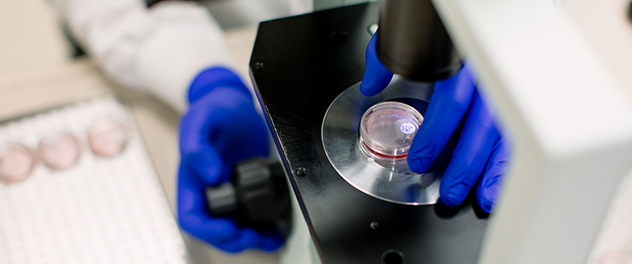 Overcoming transplant barriers
Overcoming transplant barriers
Using transplant immunology, regenerative medicine and tissue engineering applications, our lab is developing replacement tissues and organs for people with cardiovascular disease.
Overview
The Cardiovascular Tissue Engineering Research Laboratory helps people with cardiovascular conditions through the sound application of transplant immunology, regenerative medicine and tissue engineering principles.
The lab, led by principal investigator Leigh G. Griffiths, Ph.D., MRCVS, at Mayo Clinic in Rochester, Minnesota, is dedicated to rigorous scientific investigation of cardiovascular conditions.
Improving patient care
Our research is inspired by our commitment to solving the unmet clinical needs of patients. These needs are especially pronounced in the cardiovascular system, where even minor tissue or organ dysfunction can precipitate catastrophic failure. We want to provide lifelong cures for cardiovascular conditions by developing regenerative and tissue-engineered solutions that replace damaged cardiovascular tissues and organs.
The parameters under which cardiovascular structures function are extremely arduous. The combination of exacting functional parameters and intolerance to even minor levels of dysfunction form the critical design criteria for attempts to produce replacement cardiovascular tissues and organs through regenerative medicine and tissue engineering approaches.
Although this work inevitably involves benchtop scientific research, our lab team has a strong clinical foundation that drives judicious translation of our research discoveries into improved patient care.
Identifying biomarkers for rejection
Our transplant immunology work focuses on defining the barriers to human-to-human transplantation, known as allogeneic transplantation, and animal-to-human transplantation, known as xenogeneic transplantation.
Under the expertise of Dr. Griffiths, the Cardiovascular Tissue Engineering Research Lab pioneered novel patented antigen identification technologies. We used this technology to evaluate immune response toward human leukocyte antigens (HLA, or their animal equivalents), non-HLA antigens (minor histocompatibility antigens) and nonprotein antigens (such as carbohydrates) longitudinally in individual transplant recipients.
Current transplant rejection monitoring approaches are highly invasive, such as taking out pieces of the heart using endomyocardial biopsy. And rejection is identified only after the immune system has already caused damage to the transplanted organ.
Our goal is to identify preoperative and postoperative biomarkers for early signs of transplant rejection before immune-mediated organ damage. Our approach guides individualized immunosuppression therapy, preventing immune-mediated graft damage and thereby improving long-term survival in transplant recipients.
Improving xenogeneic scaffolds
Many researchers are investigating methods of using animal tissues in which the cells are removed as regenerative biomaterials and scaffolds to develop tissue-engineered organs and tissues. When combined with a person's own cells, these extracellular matrix (ECM) scaffolds are capable of directing cell migration, growth and differentiation to build anatomically correct and functional tissues and organs.
Although this approach shows great promise, unfixed animal-derived scaffolds contain components called antigens that stimulate an aggressive immune rejection response after implantation. Removal of antigenic components from the material before cell seeding and implantation in the patient would overcome a critical barrier to the use of animal-derived ECM scaffolds in tissue engineering and regenerative medicine applications.
We have pioneered a patented multidisciplinary approach to develop ideal xenogeneic scaffolds for tissue engineering and regenerative medicine applications. The cardiovascular scaffolds generated using this approach exhibit no detectable local immune rejection response and are therefore immunologically acceptable to the recipient's immune system. These cardiovascular scaffolds include artery, vein, heart valve and cardiac tissue, and the whole heart.
This breakthrough ensures that the regenerative and tissue-engineered products developed in our lab aren't destroyed by the recipient immune system. In fact, our regenerative products are recognized by the recipient as their own tissue and over time become part of the recipient's own body.
While regenerative ECM scaffolds are an important and clinically relevant breakthrough, replacement of entire organs such as the whole heart requires that the graft perform its physiological function, such as pumping blood, immediately on implantation.
Our tissue engineering work seeks to build whole organs in the lab to provide such immediate function on implantation into the recipient.
Building on our immunologically acceptable ECM scaffolds, we're currently working on repopulating the biomaterial with recipient cells, differentiating those cells to provide normal adult function, such as beating heart muscle, and providing a normal vascular supply to the organ to support such functional cells.